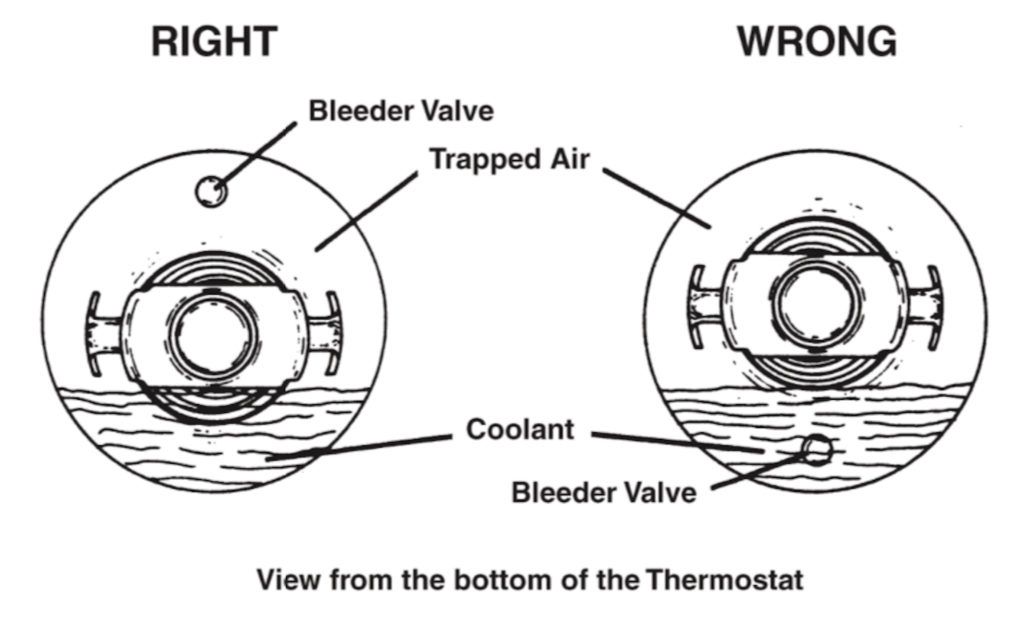The modern cooling system plays a crucial part in the process, as the demands for increased efficiency, together with factors such as higher flow rates, turbocharger technology, autonomous heating and air conditioning, have transformed the traditional process of engine cooling into a sophisticated system.
Effective thermal control in all areas of the engine from initial start-up until reaching its designed operating temperature, whether in hot spots such as around the cylinder head or cooler zones elsewhere, is vital in order to maintain the VMs claimed emissions figures and subsequently conform with the legislative requirements, which in light of recent governmental pronouncements concerning the environment, could conceivably also become a responsibility of the workshop at some point in the not too distant future.
Even stricter future emissions regulations will require engines to operate at ten per cent higher temperatures and increased pressure in order to fall within the limits, as well as to minimise fuel combustion.
This will necessitate more powerful cooling systems to allow the vehicle to run efficiently for its entire lifespan.
Efficient thermal management is also one of the most important factors in the fight to combat engine wear because without effective temperature control, despite the presence of high quality oil, damage to its internal components would be unavoidable.
Although generally overlooked at every level within the aftermarket, it is the thermostat that ensures that the engine’s temperature is managed and the emission requirements are met by effectively controlling the flow of coolant around the system to allow the engine to reach its optimum working temperature as quickly as possible, and then accurately maintaining it within strictly defined parameters.
As the importance of temperature control has grown, so has the sophistication of the thermostat.
So, although the traditional naked version, which was introduced in the 1920s, remained almost unchanged for the rest of the century, today it’s a different story with integrated thermostat housings and MAP thermostats that are controlled and activated via the vehicle’s ECU.
Therefore, only original equipment (OE) quality products should be used when they are replaced, as inaccuracies of more than plus or minus two degrees centigrade will have a considerable effect on the level of emissions emitted.
Thermostat hints and fitting tips
Although, providing the housing and surfaces are cleaned and a new gasket used, fitting a traditional ‘naked’ thermostat is a straightforward process, replacement does also give technicians the ideal opportunity to check all parts of the vehicle’s cooling system for signs of wear.
Some thermostats have a bleeder or ‘jiggle’ valve, which is located in the flange and is designed to stop an air-lock being trapped in the cooling system.
These versions must be positioned with the bleeder valve on the high side of the housing to allow air to pass through it and prevent an air-lock from forming in the system.
Others such as reverse poppet or ‘bypass’ thermostats have two sealing surfaces in order to regulate the flow around the engine and the radiator.
When the engine is started and cool, the thermostat prevents coolant from flowing through the radiator, directing it solely around the engine.
As it warms however, it then opens the port to the radiator and closes the bypass to the engine, to allow the coolant to be cooled in order to accurately control the engine’s temperature.
It is therefore very important to ascertain the correct thermostat for the application because the use of a regular version in a bypass system for example, may cause the engine to operate lower or higher than its specified temperature and impair its aforementioned operational efficiency.

When it comes to integrated housing and MAP controlled thermostats, the increasing complexity of these thermostats directly affects their predicted service life and crucially, their cost, which is why should not be considered an ‘anything will do’ product as the quality will directly affect both their ability to operate within the VM’s strict performance parameters and their expected service life, so OE quality must be the benchmark.
Dayco’s extensive technological know-how and drive to ensure its products deliver to the highest levels of performance means that a combination of precision couplings and quality materials has enabled the company to supply a comprehensive range of thermostats that are of OE standard in their quality, safety, efficiency and durability.
For further information about Dayco, email [email protected] or select ‘more details’ below.







